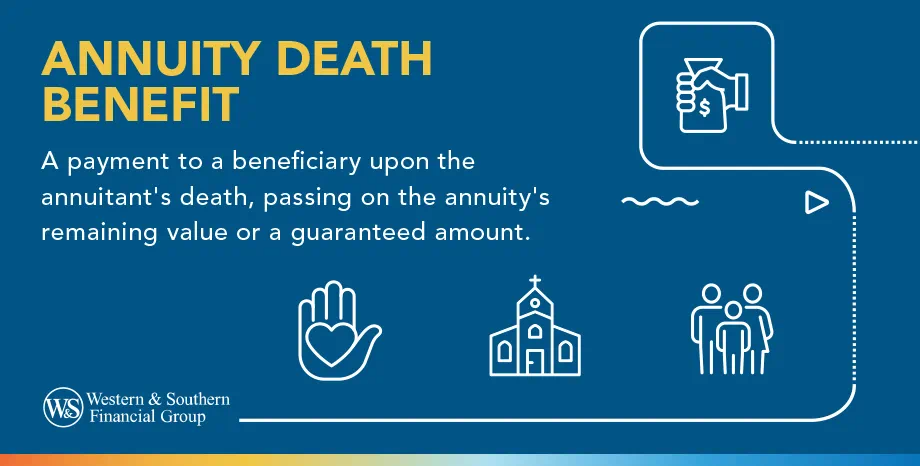Table of Contents
Table of Contents


Key Takeaways
- When a death claim occurs with an annuity, it is important to have a named beneficiary in the contract.
- Different options exist for annuity death benefits, depending on the contract and insurer.
- Selecting a refund or "period certain" option in your annuity provides a death benefit if you die early.
- Annuity death benefits can help streamline the process, allowing beneficiaries to receive funds quickly and privately.
- Life insurance proceeds are usually tax-free, but annuity death benefits may be taxable for beneficiaries.
Annuities are a type of insurance contract that focuses on growing your assets and helping to provide a guaranteed income. Some contracts provide a death benefit for the annuity value that's not paid out during your lifetime.
Here's a look at how annuity death benefits work and when choosing an annuity with a death benefit may be a good idea.
How Annuity Death Benefits Work
When a death claim occurs, annuities typically pay death benefits to a beneficiary named in the contract. Naming a beneficiary other than the estate can help this process go more smoothly, and can help ensure that the proceeds go to whoever the individual wanted the money to go to rather than going through probate.
When present, a death benefit is automatically included with your contract. Depending on the type of annuity you purchase, you may be able to add enhanced death benefits and features, but there could be additional costs or fees associated with these add-ons.
Options for Annuity Death Benefits
You may be able to choose from several types of annuity death benefits depending on your contract and your insurer. Here are some of the different options:
Standard Death Benefit
The simplest option is a standard death benefit that pays the annuity's contract value to a beneficiary. The beneficiary simply receives the current account value, whether it has increased or decreased since it was issued.
Return of Premium
Some contracts provide a death benefit that returns either your account value or your initial premium, whichever is greater (minus any withdrawals you make or fees to your account). This return of premium death benefit applies regardless of how your annuity performs, so it can be beneficial if your account experiences losses.
Stepped-up Benefit
Another type of benefit credits your account balance periodically (every year, for example) by setting a "high-water mark." A high-water mark is the highest value that an investment fund or account has reached. Then the insurer pays a death benefit that's the greater of the current account value or the last high-water mark. Again, any withdrawals or fees may reduce the amount your beneficiary or beneficiaries receive.
Guaranteed Increase
Some annuities take your initial investment and automatically add a certain percentage to that amount every year (3 percent, for example) as an amount that would be paid as a death benefit. Beneficiaries then receive either the actual account value or the initial investment with the yearly increase, whichever is greater.
Immediate Annuities
If you purchase an immediate annuity that provides a guaranteed stream of income, you may want to consider choosing a refund option or a "period certain" option to provide a death benefit to your beneficiaries if you die when guaranteed payments are still available. For example, you could select an annuity that pays out for 10 years, but if you die before the 10 years is up, the remaining payments are guaranteed to the beneficiary.
How Can Annuity Death Benefits Potentially Help?
An annuity death benefit can be helpful in some scenarios. Here are a few examples:
To streamline the process: By helping to avoid the probate process, your beneficiaries may receive funds quickly and easily, and the transfer is private.
To help manage risk of untimely death: A refund option or "period certain" on an immediate annuity helps you manage the risk of dying right after you begin taking guaranteed lifetime payments.
Taxation: Proceeds from a life insurance policy generally pass to beneficiaries without taxation. But annuity death benefits may produce taxable income for your beneficiaries. That said, the details depend on the circumstances, so it's a good idea to review your situation with a tax professional so you know what to expect.
Annuities often offer death benefits that provide streamlined payments to beneficiaries. You can typically choose from several options, and it's worth exploring all of the alternatives. Choose an annuity that functions in the way that best helps you and your family.
Choose an annuity that helps provide continuous financial care after you're gone. Start Your Free Plan




















